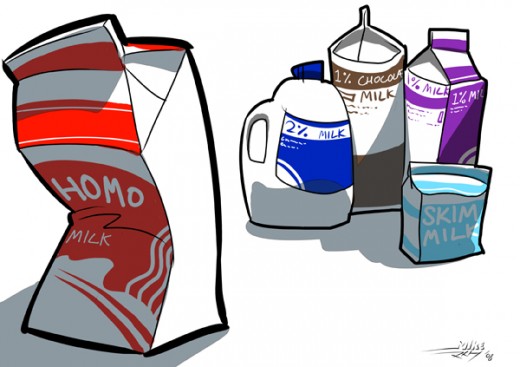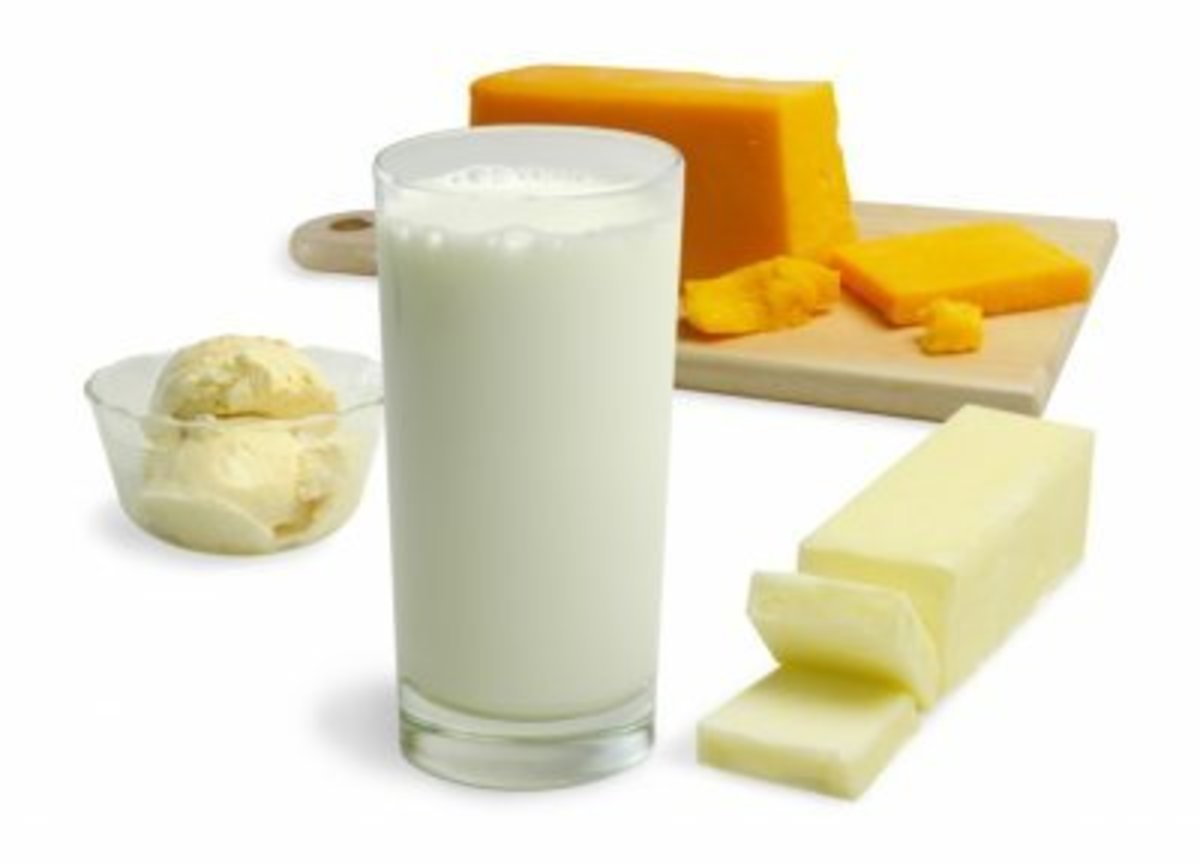- HubPages»
- Food and Cooking»
- Food Safety»
- Food Allergies
Lactose Intolerance

The Basics
Lactose is a natural sugar found in milk and other dairy products. Intolerance to lactose can have some symptoms that mimic those of a milk allergy. In fact, these symptoms are not a true allergy. They are caused because the body does not posses adequate enzyme, lactase, to break down the sugar in the intestinal tract. When lactose is not properly digested, symptoms of abdominal bloating, cramping, and diarrhea can result.
Prevalence
Lactase deficiency is prevalent in adults worldwide, with estimates that as much as 70% are affected. It may be permanent or temporary. Primary lactase deficiency is the gradual lose of lactase that has been known to occur with age but also in racial groups. Primary lactase deficiency is thought to be permanent. Secondary lactase deficiency occurs as a result of another medical condition or illness that impairs the normal activity of the digestive system. This type of deficiency may only be temporary. The conditions most often associated with secondary lactase deficiency are celiac disease, irritable bowel, Crohn's disease, gastroenteritis, post gastrointestinal surgery, and irritation to the lining of the gastrointestinal tract by certain medications.
Diagnosis
The lactose tolerance test is used to diagnose lactose intolerance. During this test, a person consumes a large dose of lactose, equivalent to four glasses of milk. Three parameters confirm a lactose intolerance. An inadequate rise in blood glucose, presence of physical symptoms, as well as a positive breath hydrogen test all indicate that lactose is not being digested.
Treatment
Management of lactose intolerance includes avoidance or limitation of foods containing lactose. Some individuals may tolerate small amounts of foods containing lactose especially when consumed with other foods rather than on an empty stomach. Also, some may be able to tolerate foods that have been produced to be low lactose, such as milk treated to breakdown the lactose. Others may be successful using an oral lactase enzyme taken with all dairy products.
In addition to dairy products, foods that often contain lactose are beverage mixes, breads, cakes, candies, cereals, cookies, cream soups, desserts, diet foods, frostings, frozen entrees, high protein foods, pastries, prepared foods, processed meats, salad dressings, sauces and gravies, and sherbet. · Milk products with active cultures, such as yogurt, may be tolerated by some people with lactose intolerance. Active cultures help to breakdown lactose in these products. Similarly, heated milk products may be tolerated better than cold milk products.
Eliminating dairy products require careful menu planning. Decreasing your intake of dairy can result in reduction of important nutrients in the diet. If you are not able to tolerate milk products in your diet, discuss with your physician or dietitian your need to maintain adequate intake of protein, calcium, vitamin A, vitamin D, riboflavin, pantothenic acid, and phosphorous. If reintroducing lactose into your diet after secondary deficiency, increasing your lactose consumption slowly may help tolerance.
Reintroducing Lactose
- Start with low lactose milk products, such as aged cheeses or low lactose milk
- Go slowly, introducing foods in small quantities, one at a time
- Eat lactose containing foods with other foods, not on an empty stomach
Label Reading
The amount of lactose in foods can vary from trace to large amounts. People experiencing lactose intolerance, therefore, may tolerate some milk products while not tolerating others. Moreover, even persons diagnosed with lactose intolerance have been shown to tolerate some amounts of lactose. This is especially true when eaten with other foods or active cultures, such as yogurt.
Even with familiar brands, it is very important to read all labels carefully prior to buying or eating a food. Food manufacturers frequently change suppliers and ingredients. It is equally important to read labels when changing brands. Different brands of the same type of food may contain different ingredients.
Review the list of common foods and milk ingredients and help take the guess work out of label reading. Keep this list handy, you never know when you will need to read a food label.
Lactose Content of Foods
High Lactose Foods
| Low Lactose Foods
|
|---|---|
acidophilus milk
| processed cheese
|
buttermilk
| aged cheese
|
buttermilk solids
| blue cheese
|
cultured milk
| parmesan cheese
|
condensed milk
| swiss cheese
|
dry milk solids
| american chesse
|
evaporated milk
| sharp cheddar cheese
|
fat free milk
| artificial butter
|
low fat milk
| artificial butter flavor
|
malted milk
| butter
|
milk powder
| butter fat
|
milk solid
| butter flavored oil
|
milk solid pastes
| butter solids
|
nonfat dry milk
| whipped butter
|
nonfat milk
| margarine
|
nonfat milk solids
| whey hydrolysate
|
powdered milk
| whey protein hydrolysate
|
skim milk
| whey protein concentrate
|
skim milk powder
| cured whey
|
whole milk
| delactosed whey
|
1% milk
| demineralized whey
|
2% milk
| hydrolyzed whey
|
whipped cream
| powdered whey
|
heavy cream
| sweet dairy whey
|
curds
| whey
|
custard
| whey protein
|
ghee
| acid whey
|
half & half
| whey powder
|
sweetened condensed milk
| whey solids
|
yogurt
| cream cheese
|
yogurt powder
| sherbet
|
processed cheese food
| |
cheese spread
| |
sour cream
| |
imitation sour cream
| |
cottage cheese
| |
ricotta cheese
| |
ice cream
| |
ice milk
| |
frozen yogurt
| |
pudding
|








